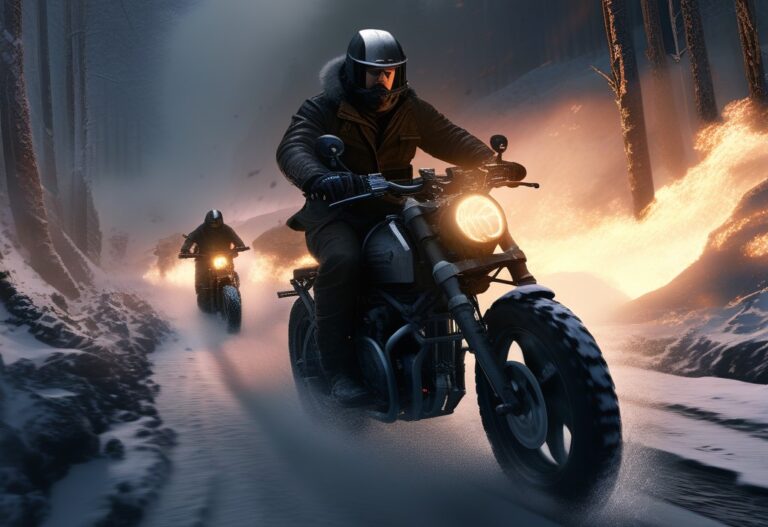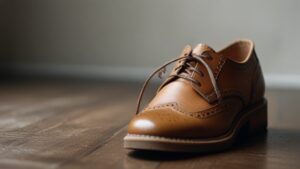Winter arrives with its chilly winds and icy roads, making biking a daunting task for many enthusiasts. However, with the right hacks and preparations, you can continue cruising on two wheels throughout the frosty season. In this article, we will explore essential biking tips for winter, based on data collected from numerous experienced riders.
1. Layer Up: Dressing for Success
Why is layering important for winter biking?
Layering is crucial in winter biking as it helps regulate body temperature and keeps you comfortable throughout your ride. With varying levels of exertion during biking, layering allows you to adjust your clothing accordingly and prevent sweating or getting too cold.
What are the recommended clothing layers for winter biking?
– Base Layer: Start with a moisture-wicking thermal base layer to stay dry and warm.
– Insulating Layers: Choose synthetic or wool materials for mid-layers to provide insulation and retain body heat. Fleece or down jackets are great choices.
– Shell Layer: Invest in a windproof and waterproof shell jacket and pants to protect yourself from the elements while allowing sweat vapor to escape.
– Extremity Protection: Wear thermal gloves, woolen socks, and insulating headgear like a balaclava or beanie to keep your hands, feet, and head warm.
2. Ensure Proper Bike Maintenance
Why is bike maintenance important in winter?
Winter brings road hazards like debris, salt, and slush, which can take a toll on your bike. Regular maintenance ensures optimal performance, prolongs the lifespan of your bike, and minimizes the risk of accidents.
What winter-specific bike maintenance should I consider?
– Cleaning: Wipe down your bike after rides to remove salt and grime buildup, especially on the drivetrain.
– Lubrication: Apply a suitable wet or ceramic lubricant to prevent rust and corrosion on parts exposed to moisture.
– Tire Selection: Consider using wider tires with suitable tread patterns for better traction on slippery roads. Lower tire pressure slightly for increased grip.
– Brake Check: Ensure your brakes are in top condition and have sufficient pad wear. Wet conditions may reduce stopping power.
– Lighting: Days are shorter in winter, so ensure your bike lights are working properly for increased visibility.
3. Plan Your Routes Strategically
Why is route planning important during winter?
Choosing the right route in winter can make your biking experience more enjoyable and safe. Certain roads might be too icy or poorly maintained, increasing the risk of accidents or slow progress.
What factors should I consider when planning my winter biking routes?
– Road Conditions: Prioritize well-maintained roads with a lower chance of ice buildup. Check local weather reports or online resources for real-time road condition updates.
– Bike-Friendly Paths: Look for dedicated bike paths or those with wider shoulders to ensure a safe distance from moving vehicles.
– Lighting: Choose routes with better street lighting to enhance visibility during shorter daylight hours.
– Alternative Routes: Keep backup routes in mind to avoid areas prone to traffic congestion or heavy snowfall.
4. Stay Visible and Safe
Why is visibility crucial in winter biking?
Reduced daylight, fog, and snowfall can hamper visibility during winter biking. Staying visible to motorists and pedestrians is paramount for ensuring safety on the roads.
How can I enhance my visibility while biking in winter?
– Reflective Clothing: Wear a reflective vest or add reflective tape to your clothing, helmet, and bike frame to increase visibility.
– Bike Lights: Use bright, high-quality front and rear lights to ensure you are visible to others, especially during dimly lit conditions.
– Hand Signals: Make your turns and intentions clear to others by using appropriate hand signals in advance.
– Side Mirror: Attach a handlebar or helmet-mounted mirror to keep an eye on traffic behind you without needing to turn your head.
5. Adjust Riding Techniques
What riding techniques should I focus on during winter?
A few adjustments in your riding techniques can significantly improve safety and stability on winter roads.
What are some recommended riding techniques for winter biking?
– Slower Speeds: Reduce your speed to maintain better control and allow for longer stopping distances on slippery surfaces.
– Braking: Apply brakes gently and gradually to avoid skidding. Use both brakes together, mainly applying the rear brake first.
– Cornering: Take wider turns while maintaining a slower speed to avoid sliding or skidding on icy surfaces.
– Balance: Maintain a balanced posture by shifting your body weight more towards the rear of the bike to increase traction on the front tire.
– Pothole Awareness: Be cautious of hidden potholes or road imperfections that may be concealed under snow or slush.
When winter arrives, don’t let the cold weather discourage you from biking. By utilizing the biking hacks mentioned above and embracing the right mindset, you can continue to enjoy the freedom and benefits of cycling throughout the winter season. Stay warm, safe, and keep those wheels rolling!
FAQ: Winter Biking Questions and Answers
Q1: Is it safe to bike in winter?
Yes, biking in winter can be safe if you take necessary precautions, such as dressing appropriately, maintaining your bike, and adapting your riding techniques to the weather conditions.
Q2: How can I protect my bike from winter rust?
Regularly wipe your bike down after rides to remove salt and grime, and apply a suitable lubricant to prevent rust formation. Consider storing your bike in a dry place when not in use.
Q3: Can I use my regular bike tires in winter?
Using wider tires with suitable tread patterns is recommended for better traction on slippery winter roads. Lower the tire pressure slightly to increase grip.
Q4: Is biking in winter suitable for beginners?
Biking in winter can be more challenging for beginners due to the weather conditions and road hazards. It is advisable to gain some experience riding in fair weather conditions first before venturing into winter biking.
Q5: What should I do if I encounter black ice on the road?
Black ice is extremely slippery and dangerous. If you encounter black ice, avoid sudden movements or braking. Keep your bike steady and ride in a straight line until you are clear of the icy patch.



